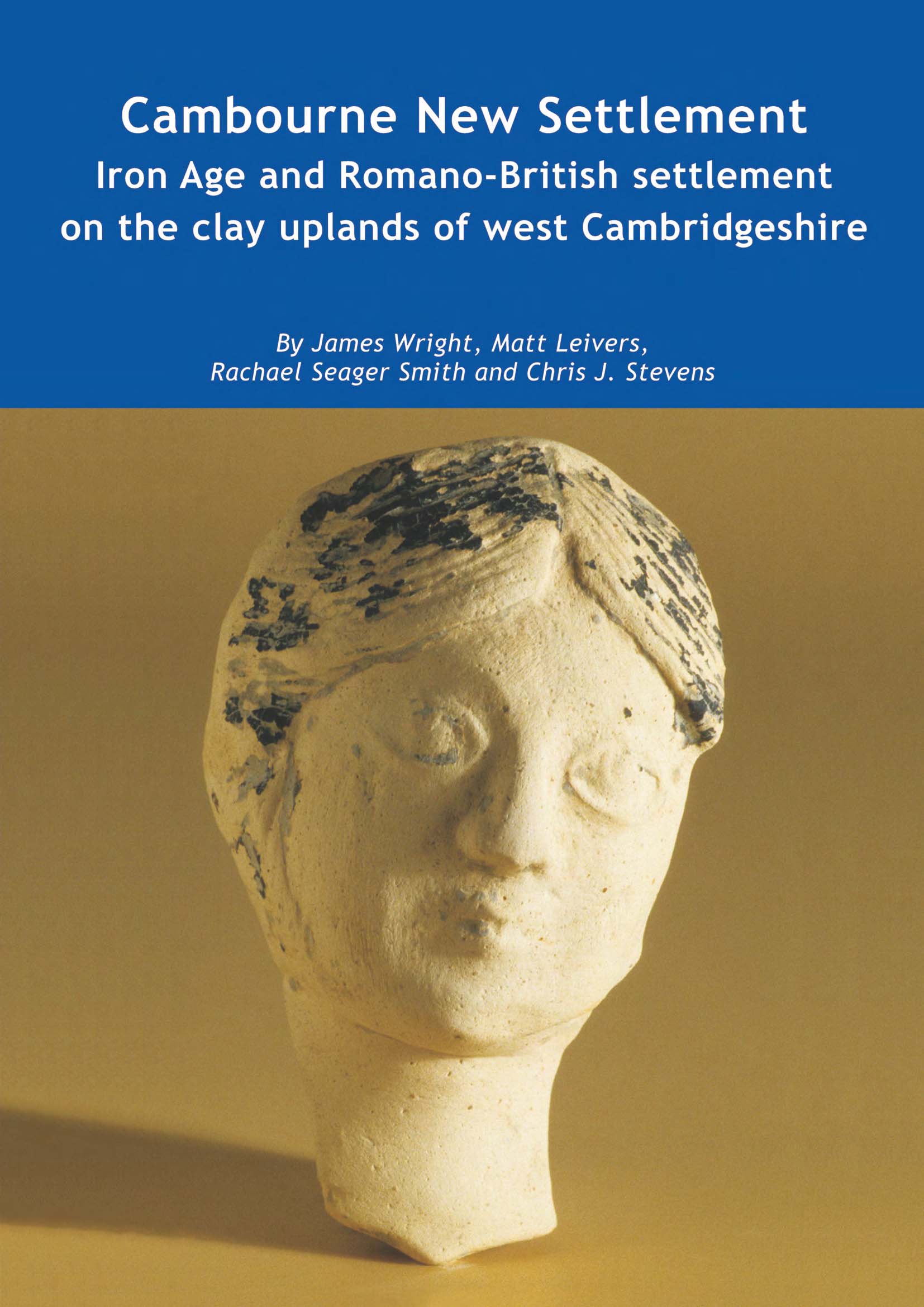Cambourne New Settlement: Iron Age and Romano-British settlement on the clay uplands of west Cambridgeshire
James Wright, Matt Leivers, Rachael Seager Smith & Chris J. Stevens

Description
Twelve excavations were carried out by Wessex Archaeology within the Cambourne Development Area. Situated on the clay uplands west of Cambridge, which have seen little previous archaeological investigations, the results presented here are important in demonstrating the ebb and flow of occupation according to population or agricultural pressure.
Short-lived Bronze Age occupation was followed in the Middle Iron Age by small farming communities with an economy based on stock-raising and some arable cultivation. The Late Iron Age seems to have seen a recession, perhaps partly due to increased waterlogging making farming less viable.
From the mid-1st century AD new settlements began to emerge, possibly partly stimulated by the presence of Ermine Street, and within a century the area was relatively densely occupied. Several farmsteads were remodelled in the later Romano-British period, though none seems to have been very prosperous.
Dispersed occupation may have continued into the early 5th century at least, followed by a hiatus until the 12th/13th century when the entire area was taken into arable cultivation, leaving the ubiquitous traces of medieval ridge and furrow agriculture.
Details
| Published | Published By | Pages | ISBN | ||||||||||||||||||||||||||||||||||||||||||||||||||||||||||||||||||||||||||||||||||||||||||||||||
|---|---|---|---|---|---|---|---|---|---|---|---|---|---|---|---|---|---|---|---|---|---|---|---|---|---|---|---|---|---|---|---|---|---|---|---|---|---|---|---|---|---|---|---|---|---|---|---|---|---|---|---|---|---|---|---|---|---|---|---|---|---|---|---|---|---|---|---|---|---|---|---|---|---|---|---|---|---|---|---|---|---|---|---|---|---|---|---|---|---|---|---|---|---|---|---|---|---|---|---|
| Jan. 1, 2009 | Wessex Archaeology | 154 | 978-1-874350-49-1 | ||||||||||||||||||||||||||||||||||||||||||||||||||||||||||||||||||||||||||||||||||||||||||||||||
| License Information | |||||||||||||||||||||||||||||||||||||||||||||||||||||||||||||||||||||||||||||||||||||||||||||||||||
| Copyright © Wessex Archaeology. This work is openly licensed via CC BY-NC-ND 4.0 | |||||||||||||||||||||||||||||||||||||||||||||||||||||||||||||||||||||||||||||||||||||||||||||||||||
